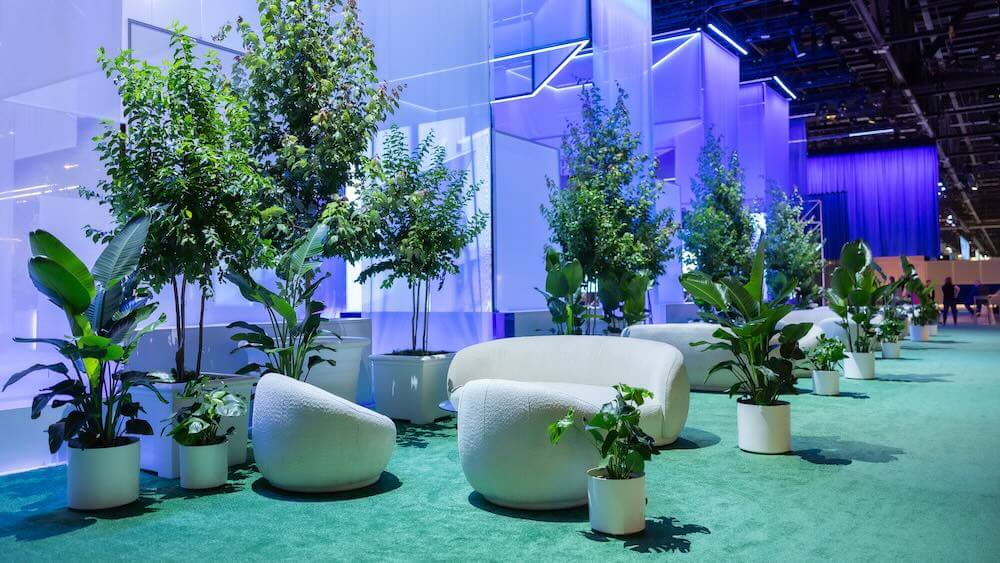


When meetings prioritize comfort, creativity, and connection, audiences feel cared for, not just credentialed.
I’ve had the opportunity in my role recently to spend more time inside corporate events to see firsthand how the best brands in the world are using live experiences to connect, inspire and convert. What’s struck me most isn’t just the scale or spend, but the mindset: These events operate with a hospitality-first philosophy that makes every moment feel intentional. At corporate events, the lighting is warmer. The food is better. The seating is softer. The production quality is better. Even the air seems to hum with care and creativity.
And while association and for-profit organizers may not have the same budgets or brand reach, we can absolutely borrow the thinking that makes these experiences so effective. Because what corporate events have mastered isn’t excess, it’s empathy.
They’re built on hospitality, not just logistics. They prioritize comfort, creativity, and connection as seriously as content and commerce. And as a result, audiences feel cared for, not just credentialed.
Here are five lessons worth borrowing — and ways to make them work within association and for-profit event models.
1. Lead With Hospitality, Not Logistics
Corporate event teams often start by asking, “How do we want people to feel?” Association and for-profit planners tend to start with, “How many people can we fit?” Leading with hospitality means designing for emotion and empathy before tackling floor plans or F&B. Maybe that means creating a sense of arrival that feels personal, training staff to anticipate needs, or simply adding human touches that communicate care. When attendees feel hosted, not herded, they engage more deeply and leave more satisfied.
2. Design for Comfort and Connection
Corporate events understand that ease (physical and psychological) drives engagement. Lounge seating, natural light, greenery, and even ambient sound all invite people to relax and connect. While convention center space might feel rigid, organizers can still create “micro-moments” of comfort: sponsored coffee lounges, quiet recharge zones, and seating clusters that spark conversation. When people feel at ease, they’re more open to networking, learning, and buying.
- Claim or renew your subscription to Convene.
- Want deep-dive insights on events delivered to your inbox? Sign up for our newsletters.

A sponsored coffee bar is just one way corporate events can create “micro moments” of comfort.
3. Curate Experiences With Meaning
Corporate events are choreographed. Every element, from lighting cues to playlist choices, reinforces a larger story about the brand and its audience. Associations and independent organizers can apply that same intentionality to their event flow. Consider the emotional journey of an attendee: the energy of arrival, the rhythm of learning, the exhale of community moments. Design programming and pacing to support that journey. As Freeman’s latest research confirmed, experience design isn’t about adding spectacle, it’s about giving more moments purpose.
4. Upgrade Experiences Creatively
Not every improvement requires a budget boost and many can be sponsor-funded or opt-in. Invite sponsors to underwrite experiences that genuinely enhance attendee value, like a wellness lounge, espresso bar, or immersive learning zone. Or introduce a VIP tier that attendees can choose to purchase, giving them access to lounge seating, better food options, or exclusive sessions.
These models generate new revenue while making the event feel more elevated and personal. Everyone wins when better experiences fund themselves.
5. Think Like a Brand, Act Like a Community
Corporate events are masterclasses in brand coherence where every detail reinforces who they are and what they stand for. Associations, in particular, can channel that same discipline by rooting every design choice in mission and member identity. This doesn’t mean slicker branding; it means experiences that feel like your organization. If your event exists to advance an industry, build community, or celebrate innovation, make sure that message is tangible in every detail, from visuals to vocabulary to vibe. When your purpose is palpable, you don’t just attract attendance; you cultivate belonging.
The Takeaway
Most associations and for-profit organizers won’t replicate a corporate event’s budget, but that’s not the point. The real opportunity lies in rethinking why and how we design experiences in the first place. And when we shift our mindset from managing events to hosting experiences, we stop asking how much comfort or delight we can afford and start realizing how much we can’t afford to overlook them.
Kimberly Hardcastle-Geddes is chief strategist at mdg.








